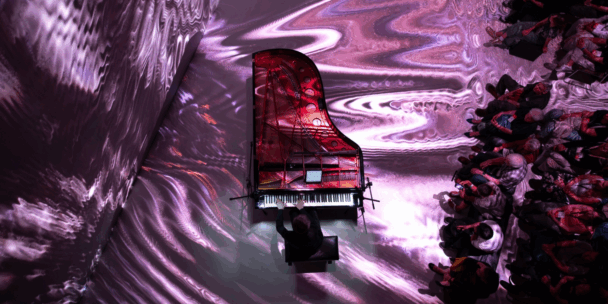What can arts and culture do in times of uncertainty?
Exert from Natalie Giorgadze, General Director of Culture Action Europe | Ars Electronica Festival, 5 September 2025
What can arts and culture do in times of uncertainty? What is their role when the ground beneath us is shifting, so to speak?
Uncertainty is something we usually fear. Policymakers, in particular, dislike uncertainty—today’s multiple crises and rapid changes push political strategies toward pragmatism, short-term fixes, and cautious choices. Everything but uncertainty, please!
But for artists, uncertainty is not an obstacle — it is often a starting point. They thrive in ambiguity, in the unknown, in the space between what is and what could be. Arts and culture have a remarkable ability to hold ambiguity without collapsing into confusion; to make space for contradiction, to welcome paradox.
In moments of uncertainty, when panic could close us down, arts has the ability to open us up. Artists create the narratives and the images that allow us to imagine futures that do not yet exist. Arts and culture can show us not only what is wrong with the present, but what else could be possible. They teach us to rehearse alternatives, to see the cracks where new possibilities can come through.
This is all very obvious for us – people working in and with arts and culture. And even more frustrating to see that the decision and policy-makers still don’t see the opportunity that the sector can bring to rethink and reimagine the future! Culture is still regarded as a luxury, artists are not involved in decision-making and are still notariously underpaid for the work that they do!
That is why, Culture Action Europe has launched the Ask Pay Trust Campaign. We need to ask artists and cultural workers to contribute their visions. We need to pay them fairly for their work. And we need to trust their capacity to imagine new futures. Culture and the arts are not decorations added after the “real work” of policymaking and innovation has been done — they are where new ideas, new ways of living together, and new forms of resilience are born.
One more thought I want to bring to the conversation is that related to the policy. The term itself has become something irrelevant, detached and somewhat scary. Policy is not some abstract framework floating above us; it should be responsive to the needs of the cultural sector. And crucially, the sector itself must be actively engaged in shaping those policies. Too often, as our State of Culture Report has shown, cultural policies feel alienated from the realities of cultural workers. They do not answer the needs of those they are meant to serve. And so, criticism comes easily — but engagement, dialogue, and co-creation must come more strongly.
At the same time, we must resist the hyper-instrumentalisation of culture. Increasingly, artists and cultural workers are expected to reinvent themselves in order to fit into predefined funding priorities, institutional strategies, or political agendas. Of course, culture contributes to innovation, to inclusion, to sustainability — but its value is not exhausted by those categories. When we try to make the arts prove their worth only in terms set by others, we risk diminishing their power to transform and to surprise.
So what might a “present and future culture stack” look like? For me, it starts with embracing uncertainty not as a threat but as a resource. It involves policies that are relevant and alive, shaped together with the sector, and not imposed upon it. It requires us to trust artists as co-thinkers and co-shapers of society, not merely as providers of services to other agendas. And it asks us to hold space for imagination — because in moments of rupture, when panic tempts us to close down, imagination is what keeps the horizon open.
Image credit: Artist: CHROMA / Konstantin Semilakovs, Daniel Oliver Moser, Photographer: VOG
